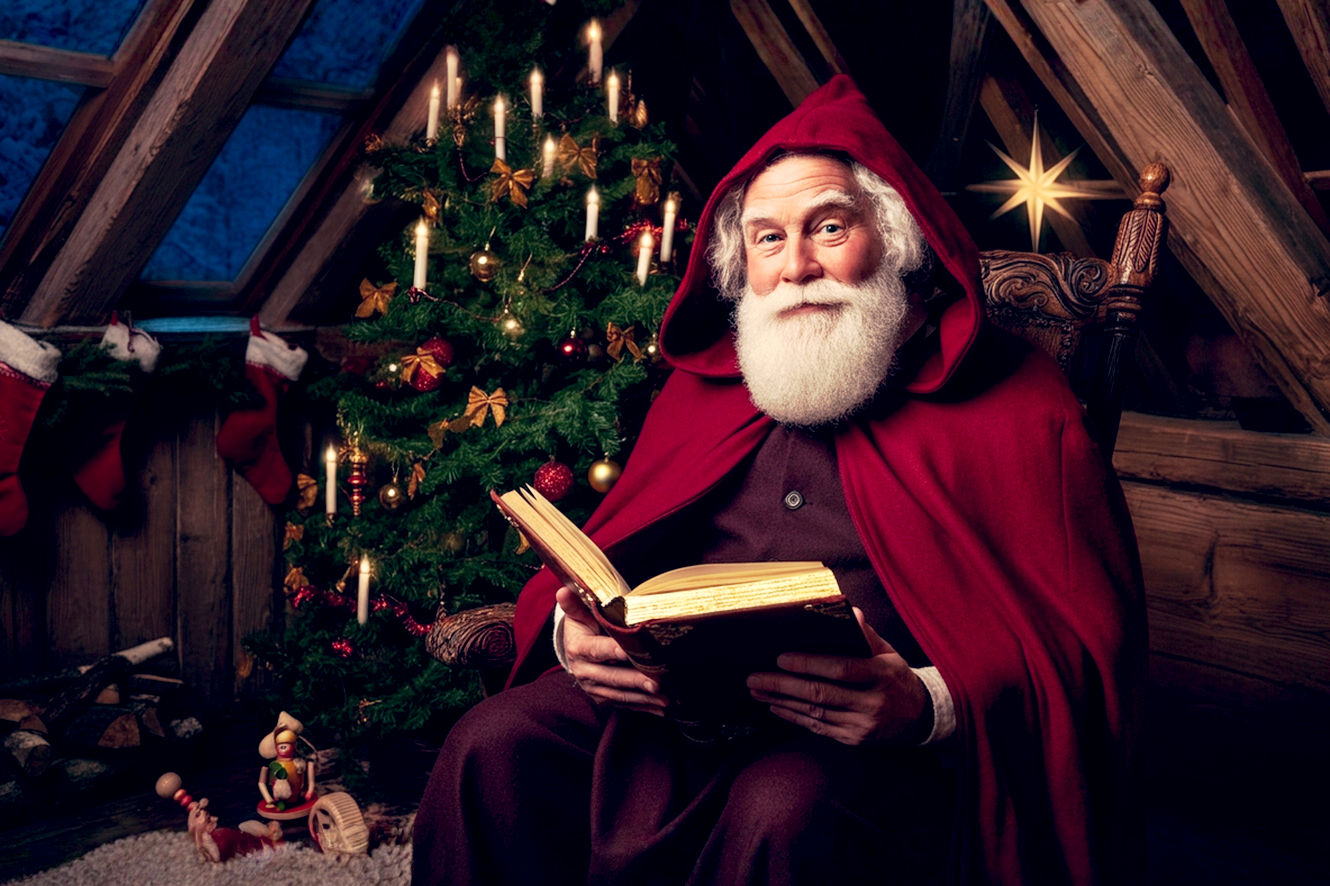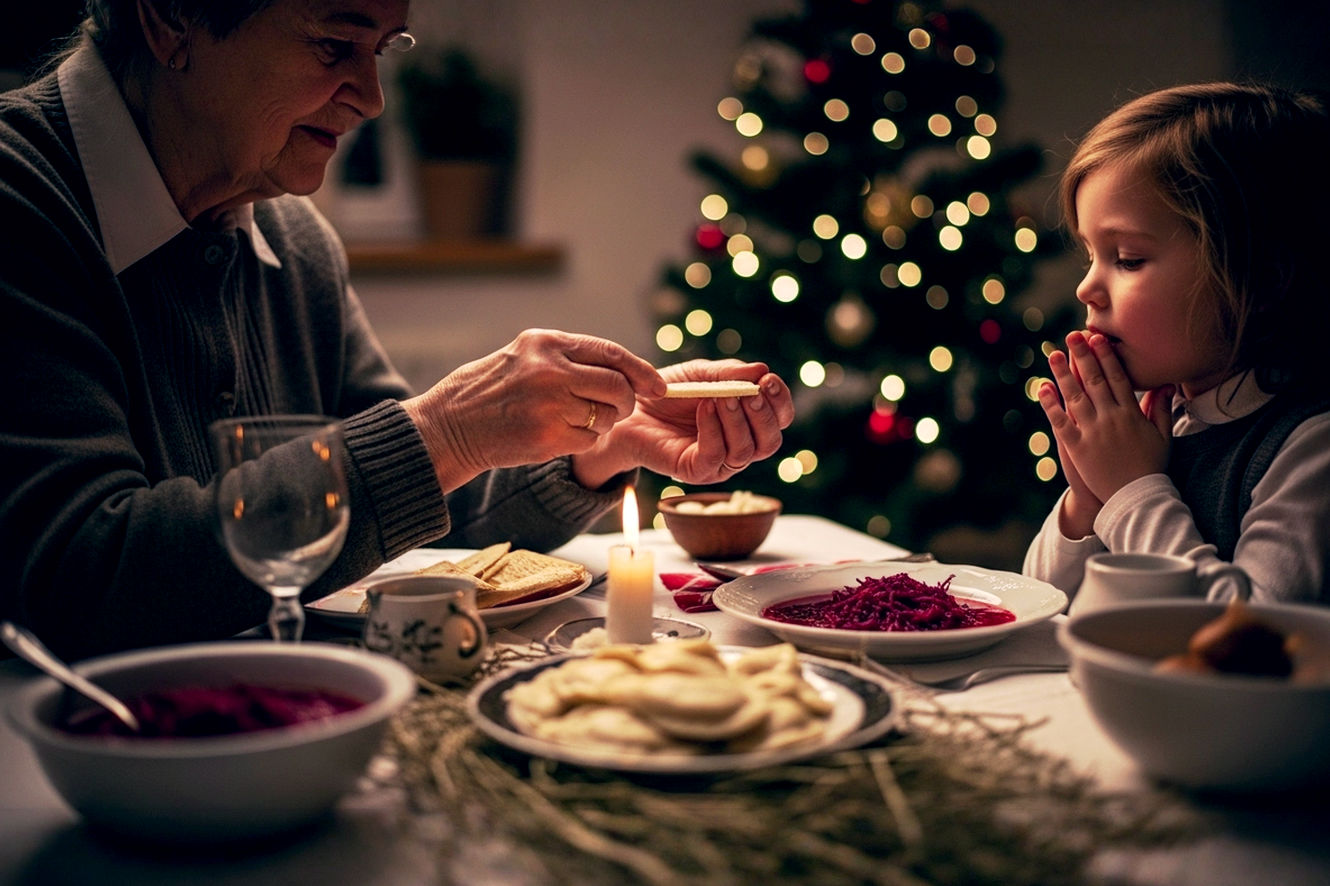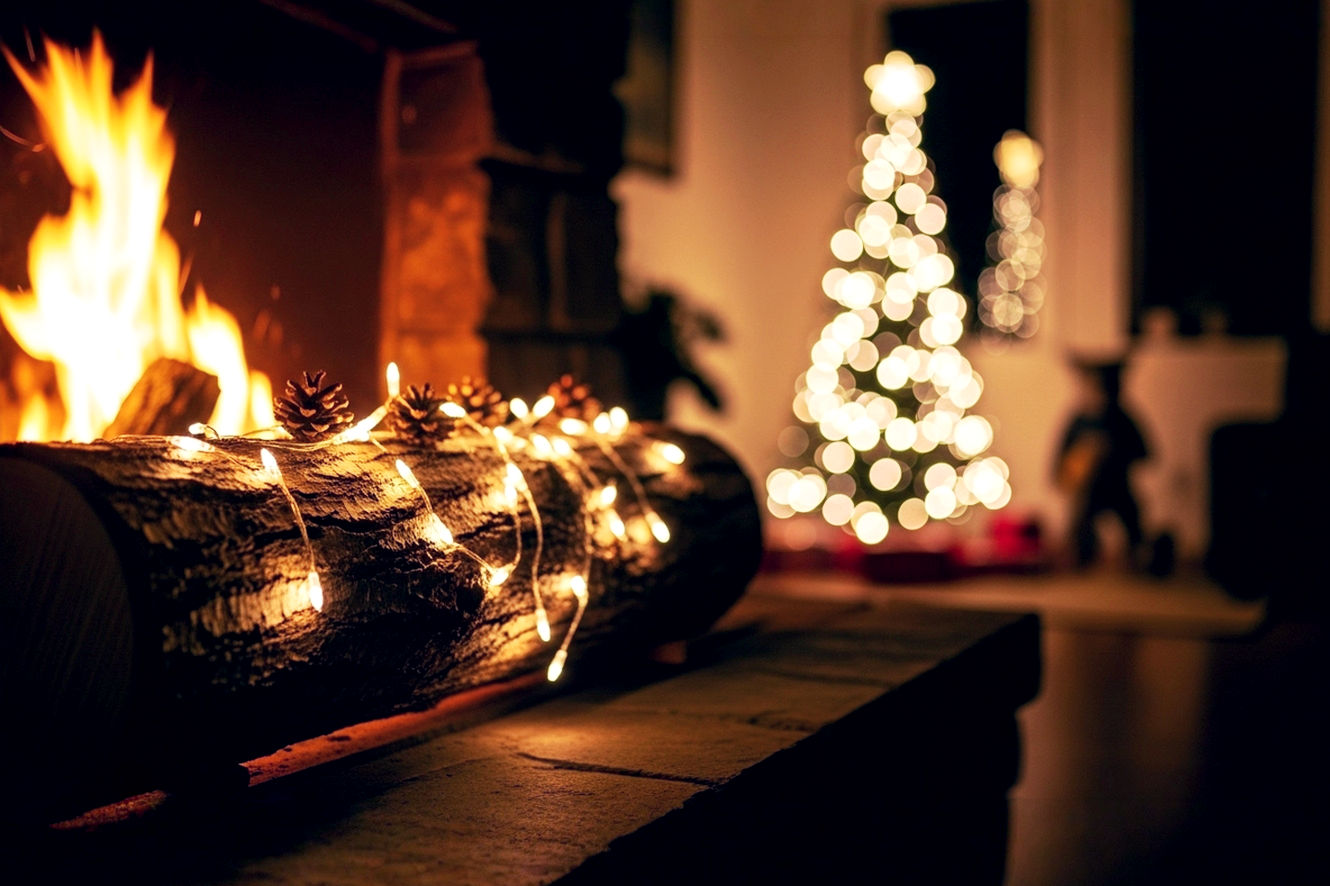This post may contain affiliate links. If you make a purchase through these links, we may earn a commission at no additional cost to you.
It hangs there, nestled deep within the fragrant boughs of the Christmas tree, a curious outlier among the angels, stars, and shimmering baubles. It’s a pickle. A glass gherkin, green and glistening, its bumpy texture catching the twinkle of the festive lights. For many families, particularly in the American Midwest, the Christmas pickle is a cherished and non-negotiable part of the holiday ritual. The story, as it’s often told, is that this is the Weihnachtsgurke, a time-honored tradition brought over by German immigrants. The first child to find the pickle hidden on the tree on Christmas morning is rewarded with an extra present, a special treat, or a year of good fortune.
It’s a charming tale, evoking images of cozy Bavarian homes and centuries of yuletide customs. It connects a modern, quirky practice to the deep, historical roots of Christmas itself. There’s just one problem: it’s almost entirely untrue.
The story of the Christmas pickle is a fascinating case study in modern folklore—a tradition whose origins are far more recent, more commercial, and more American than the popular narrative suggests. It’s a web of clever marketing, misattributed legends, and the powerful human desire for meaning and connection during the holidays. To unravel the mystery of the pickle ornament, we must journey from the glassblowing workshops of 19th-century Germany to the battle-scarred prisons of the American Civil War, and from the shelves of a five-and-dime store to the heart of the modern American family. This is the definitive story of how a humble vegetable became an unlikely Christmas icon, separating the hard-boiled facts from the juicy fiction.
The Enduring Allure of the Christmas Pickle: What Is the Tradition?
Before we debunk the myths, it’s important to understand the tradition as it exists today. The practice is simple, which is a key part of its appeal.
On Christmas Eve, after all the other ornaments have been hung, an adult hides the pickle ornament somewhere on the tree. Because both the pickle and the tree are green, it can be surprisingly difficult to spot, especially on a dense fir or spruce. On Christmas morning, the children are set loose on their search. The first one to locate the pickle earns a special privilege.
The nature of this reward varies from family to family:
- The First Present: The finder gets to open the first gift of the day.
- An Extra Present: A special, pickle-finder-only gift is set aside.
- A Year of Good Fortune: A more symbolic prize, promising the finder good luck for the coming year.
- Distributing Gifts: In some households, the finder is given the honor of handing out all the presents from under the tree.
This game adds a layer of interactive fun to Christmas morning, transforming the passive act of receiving gifts into an exciting hunt. It’s this element of playful competition and family engagement that has cemented the pickle’s place on trees across the nation. The accompanying story of its ancient German heritage only adds a veneer of historical legitimacy, making it feel less like a silly game and more like a sacred rite.
The “Old World” Legend: Unpacking the German Weihnachtsgurke
The cornerstone of the pickle ornament myth is its supposed German origin. The very name it’s often sold under, Weihnachtsgurke (literally “Christmas pickle”), seems to prove its German bona fides. The story sold with the ornament usually claims it’s an “old German tradition” (eine alte deutsche Tradition). But if you were to travel to Germany and ask the average person about this cherished custom, you’d be met with a blank stare or a bemused chuckle.
The German Perspective: A Tradition Lost in Translation?
In the early 2000s, as the pickle tradition gained steam in the U.S., researchers and journalists began to investigate its German roots and found… nothing. In December 2016, the market research firm YouGov conducted a definitive poll on the subject. They asked over 2,000 Germans if they knew of or practiced the Christmas pickle tradition. The results were staggering:
- 91% had never even heard of the legend.
- Of the remaining 9% who had, most had only learned about it from Americans or through media reports on the quirky “American” custom.
- Only a tiny fraction claimed it was a family tradition, and many of these families had connections to the U.S. or had simply adopted it for fun.
German cultural historians and museum curators have repeatedly confirmed this. The Christmas pickle is not a German custom. It’s not taught in schools, it doesn’t appear in classic German Christmas stories, and you won’t find it mentioned in historical accounts of German holiday celebrations.
So, where did the German connection come from? The answer lies not in German homes, but in German factories.
The American Roots of a “German” Tradition: The Woolworth’s Connection
The most historically sound theory for the pickle ornament’s origin points to the boom of the American Christmas industry in the late 19th century and the marketing genius of retailers like F.W. Woolworth.
Lauscha, Germany: The Glass Ornament Capital of the World
The story begins in the small town of Lauscha, nestled in the Thuringian Forest of Germany. In the mid-16th century, the town became a center for glassmaking, and by the 1840s, Lauscha’s skilled artisans had pioneered the creation of glass Christmas ornaments. Initially, these were hand-blown, silvered glass garlands, nuts, and simple shapes.
The process was intricate. A glassblower would heat a glass tube, blow it into a mold (or shape it freehand), and then, while the ornament was still hot, swirl a solution of silver nitrate or lead inside to give it a reflective, silvery coating. The outside was then painted or decorated. These early ornaments were luxury items, but as production techniques improved, they became more accessible.
Crucially, the Lauscha glassmakers created ornaments in a vast array of shapes, many of them inspired by nature. Fruits and vegetables were a popular motif, symbolizing nature’s bounty and the hope for a prosperous harvest. The collection included apples, grapes, strawberries, carrots, and, yes, pickles. For the German artisans, the pickle was likely just another shape in their catalog—no more or less significant than a glass turnip.
F.W. Woolworth and the Import Boom
In the 1880s, a young American retail magnate named Frank Winfield Woolworth visited Germany on a buying trip. He was captivated by the dazzling Lauscha ornaments and immediately recognized their commercial potential. He began importing them to the United States in massive quantities, selling them in his “five-and-ten-cent” stores.
American consumers, many of whom were recent German immigrants or their descendants, were enchanted. The German-made ornaments became a sensation, and by the 1890s, Woolworth was reportedly selling millions of dollars’ worth of them each year.
Herein lies the most probable origin of the Christmas pickle tradition. It’s believed that a savvy salesperson or marketing department, likely associated with Woolworth’s or another importer, needed a way to sell these specific, perhaps less popular, vegetable-shaped ornaments. What better way to move product than to invent a charming “Old World” tradition to go along with it?
By labeling the glass pickle as the Weihnachtsgurke and attaching the story of good luck and an extra present, they transformed a simple bauble into a must-have piece of holiday folklore. The “German” label lent it an air of authenticity that resonated with a nation fascinated by European Christmas customs. The tradition wasn’t imported from Germany; the ornament was. The tradition was born in America.
Legends and Folklore: The Stories That Gave the Pickle Its Heart
While the marketing theory is the most likely explanation for the tradition’s spread, other legends have been retroactively attached to the pickle, adding layers of meaning and emotion to its story. These tales are powerful pieces of folklore, even if their direct connection to the glass ornament is tenuous at best.
The Captive of Andersonville: The Tale of Private John Lower
The most poignant story associated with the Christmas pickle is that of Private John Lower, a Bavarian-born soldier who fought for the Union in the American Civil War.
According to family lore, Lower was captured in 1864 and sent to the infamous Confederate prison at Andersonville, Georgia. The conditions at Andersonville were horrific; thousands of prisoners died from starvation, disease, and exposure. As the story goes, on Christmas Eve, a starving and desperately ill Lower begged a prison guard for just one pickle before he died.
Moved by pity, the guard found a pickle and gave it to him. That single pickle, rich in salt and vinegar, gave Lower the physical and mental strength to persevere. He survived his imprisonment, returned to his family, and, in memory of his salvation, began a tradition of hiding a pickle on the family Christmas tree each year. It was a symbol of hope in the face of despair and a reminder that even a small act of kindness could save a life.
It’s a beautiful, heart-wrenching story. However, it exists almost entirely within the oral tradition of the Lower family. There are no military records or historical documents from Andersonville that corroborate the tale. While John Lower was a real soldier, the pickle story remains a piece of unverified, though powerful, American folklore. It speaks more to the human need for stories of hope and resilience than it does to the historical origin of the ornament tradition itself.
St. Nicholas and the Pickled Boys: A Medieval Miracle
An even older, and far grislier, legend sometimes connected to the pickle is a medieval tale about St. Nicholas, the historical figure who evolved into Santa Claus.
The story, popular in the Middle Ages, tells of three young boys who were traveling home from school. They stopped for the night at a remote inn run by a wicked butcher. The butcher, seeing an opportunity, murdered the boys, stole their belongings, and, to hide his crime, dismembered their bodies and placed them in a large pickling barrel, intending to sell them later as “pork.”
That very evening, St. Nicholas himself happened to stop at the same inn. In a dream, he saw the butcher’s evil deed. The next morning, he confronted the butcher, who confessed his crime. St. Nicholas then went to the pickling barrel, made the sign of the cross, and prayed. Miraculously, the three boys were resurrected, whole and unharmed, and emerged from the barrel.
This tale, known as “The Three Pickled Boys,” was a popular part of St. Nicholas’s hagiography and cemented his reputation as a patron saint of children. But what does it have to do with the Christmas pickle ornament? The connection is purely thematic and almost certainly a modern invention. The boys were saved from a pickling barrel, not by a literal pickle. It’s likely that someone familiar with both the St. Nicholas legend and the burgeoning pickle ornament tradition simply put the two together, creating another “ancient” backstory for the quirky custom.
Fact vs. Fiction: A Definitive Verdict
Let’s break down the evidence into a clear summary.
| The Claim | The Verdict | The Reality |
|---|---|---|
| The Christmas pickle is an ancient German tradition. | Fiction | The tradition is virtually unknown in Germany. Polls and cultural experts confirm it’s not a native custom. |
| The ornament itself is German. | Fact | Glass pickle ornaments were first crafted in Lauscha, Germany, in the late 19th century, alongside many other fruit and vegetable shapes. |
| The tradition was started by F.W. Woolworth. | Highly Likely Theory | The most plausible explanation is that American retailers, primarily Woolworth’s, invented the “Old World” story in the 1890s as a marketing strategy to sell the imported German-made ornaments. |
| The tradition comes from the Civil War story of John Lower. | Folklore | This is a powerful piece of American family lore that has become associated with the pickle, but it lacks historical verification and likely post-dates the ornament’s introduction. |
| The tradition is based on the St. Nicholas legend. | Fiction | The medieval legend is about St. Nicholas saving boys from a pickling barrel. The connection to a pickle ornament is a modern, thematic leap, not a historical link. |
The Pickle’s Place in Modern Christmas: From Niche Ornament to Cultural Phenomenon
Regardless of its fabricated origins, the Christmas pickle has become a genuine and beloved tradition for countless American families. Its popularity exploded in the 1990s and has continued to grow, fueled by the internet, specialty Christmas shops, and a cultural appreciation for quirky customs.
The Pickle Capital of the World: Berrien Springs, Michigan
No place has embraced the pickle legend more fervently than Berrien Springs, Michigan. Once a major pickle-producing region, the town proudly calls itself the “Christmas Pickle Capital of the World.” For many years, it hosted an annual Pickle Festival in early December, complete with a parade led by the “Grand Dillmeister,” who would toss fresh pickles, instead of candy, to the crowds. Though the festival has since been discontinued, the town’s identity remains intertwined with the Christmas pickle, a testament to how a community can adopt and celebrate a piece of modern folklore.
Why We Love the Lie: The Psychology Behind the Pickle Myth
Why has this demonstrably false story not only survived but thrived? The answer lies in the psychology of tradition and the magic of Christmas.
- The Appeal of Authenticity: In a world of mass-produced goods, a story of “Old World” craftsmanship and ancient customs lends a sense of authenticity and historical weight to a family’s celebration. It feels more meaningful than a simple game.
- The Power of Narrative: Humans are wired for stories. The tales of good fortune, a soldier’s survival, or a saint’s miracle are far more compelling than the mundane reality of a 19th-century marketing campaign.
- The Element of Fun: At its core, the pickle hunt is just plain fun. It encourages observation, creates friendly competition, and focuses the morning’s excitement on a shared family activity rather than just the presents themselves.
- A Tradition to Call Your Own: For many families, the pickle is their special thing. It’s a quirky ritual that sets their Christmas apart, passed down from one generation to the next, creating a unique thread of continuity.
Conclusion: The Real Magic of the Christmas Pickle
So, is the Christmas pickle a lie? In a historical sense, yes. The notion of the Weihnachtsgurke as an ancient German tradition is a myth. It’s a product of American commerce, not European heritage.
But in a more important sense, the tradition is entirely real. The magic of the pickle isn’t found in its murky, fabricated past. It’s found in the present moment: in the glint of a child’s eye as they scan the tree, in the shared laughter of a family gathered together, and in the simple joy of a game played on a peaceful Christmas morning. The ornament, born in a German workshop and given its story in an American department store, has been adopted and infused with genuine love and meaning.
The Christmas pickle is a reminder that traditions don’t have to be ancient to be valuable. Sometimes, the most cherished rituals are the ones we create ourselves. And in the end, the good fortune the pickle brings isn’t a magical gift from the past, but the love and connection we share with each other, right now. That’s a story worth celebrating—no matter how you slice it.






